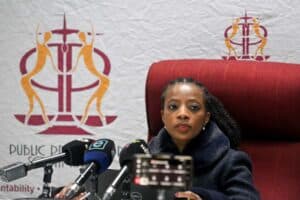According to President Cyril Ramaphosa, his 2019 promise of high-speed bullet trains and SA smart cities are back on track...

Cyril Ramaphosa claims that the Department of Transport has developed a high-speed rail framework in response to the president’s ambitious 2019 dream of South Africa’s first smart city connected to other hubs by a bullet train.
In response to a recent written parliamentary question posed to the president by Democratic Alliance (DA) leader John Steenhuisen, Ramaphosa said the concept of a state-of-the-art smart city and bullet trains has been receiving “practical attention over the last few years”.
Ramaphosa: ‘Practical attention’ for smart cities, bullet trains
“In the State of the Nation Address [Sona] in June 2019, I invited South Africans to look beyond the challenges of the present and to imagine a country of high-speed trains, smart cities and a high-tech economy,” the president stated.
“I said that to reinvigorate the implementation of the National Development Plan, we must cast our sights on the broadest of horizons. This bolder vision of a technologically advanced society has received practical attention over the last few years,” Ramaphosa revealed.
According to him, the Department of Transport has developed a high-speed rail framework.
“The framework has prioritised and ranked the corridors using internationally-benchmarked criteria. The Johannesburg-to-Durban corridor was identified as the highest-ranking potential high-speed rail corridor, with the Pretoria-to-Mbombela-to-Komatipoort corridor, and Johannesburg-to-Pretoria-to-Polokwane-to-Musina corridor, ranking second and third, respectively.”
‘High-speed rail framework’ slammed as just ‘planning on paper’
Furthermore, Ramaphosa said, on 1 November 2023, the Cabinet approved the high-speed rail framework for implementation.
In a report, News24, however, questioned the “progress” cited by the president, claiming that so far it all amounts to “just planning on paper” with “nothing concrete on the table”.
Shosholoza Meyl ‘derails’ due to ‘infrastructure challenges’
Ramaphosa’s reference to a high-speed rail framework also comes amid the news of the recent suspension of Passenger Rail Agency of South Africa’s (Prasa) relaunched Shosholoza Meyl long-distance trip between Johannesburg and Cape Town due to “infrastructure challenges”.
ALSO READ: Shosholoza Meyl fiasco: Bring back the railway police

Ramaphosa’s 2019 Sona dream shot down as ‘fantasy city of spatial division’
Ramaphosa’s mention of a new smart city founded on the technologies of the Fourth Industrial Revolution of the future in his 2019 address, was met with skepticism at the time.
Professor Loren Landau, of the African Centre for Migration and Society at Wits University, told the Sunday Times that Ramaphosa should instead focus on upgrading and integrating existing cities that work for everyone.
“What we need is a dream for how existing cities can be made more equitable, connected, and productive,” he said.
“I expect a highly designed, fantasy city will further the country’s spatial division. Much like the elite enclaves constructed by private developers, it will reinforce the divisions between highly productive, well-serviced sites and places of poverty and marginalisation.”
ALSO READ: South Africa doesn’t need new cities, it needs to focus on fixing what it has
Epic fail of Modderfontein mega city
The failure of turning Modderfontein into the “New York of Africa”, has not done South Africa’s track record for establishing smart cities any favours either.
In 2014, Chinese development group Zendai Developments, announced its intention to build an $8 billion city (around R84 billion at the time) in Modderfontein, east of Johannesburg.
Zendai’s chairman Dai Zhikang said the project would transform the property into a “New York of Africa”.

According to BusinessTech, the development was promoted as a smart city which would rival Sandton with nine functional zones, including a CBD, entertainment centre, as well as residential and educational districts.
The project — which was set to be completed in 2030 — was earmarked to be built on a 1600ha piece of land, housing approximately 30 000 families and creating up to 200 000 fixed jobs for the local community.
But, despite the release of futuristic computer-generated images, news of any progress on the project came to a screeching halt by mid-2016.
The Conversation reported that the land was eventually sold off for a scaled-down gated-community style housing development.
NOW READ: What a failed futuristic smart-city in Modderfontein tells us about African mega-cities






